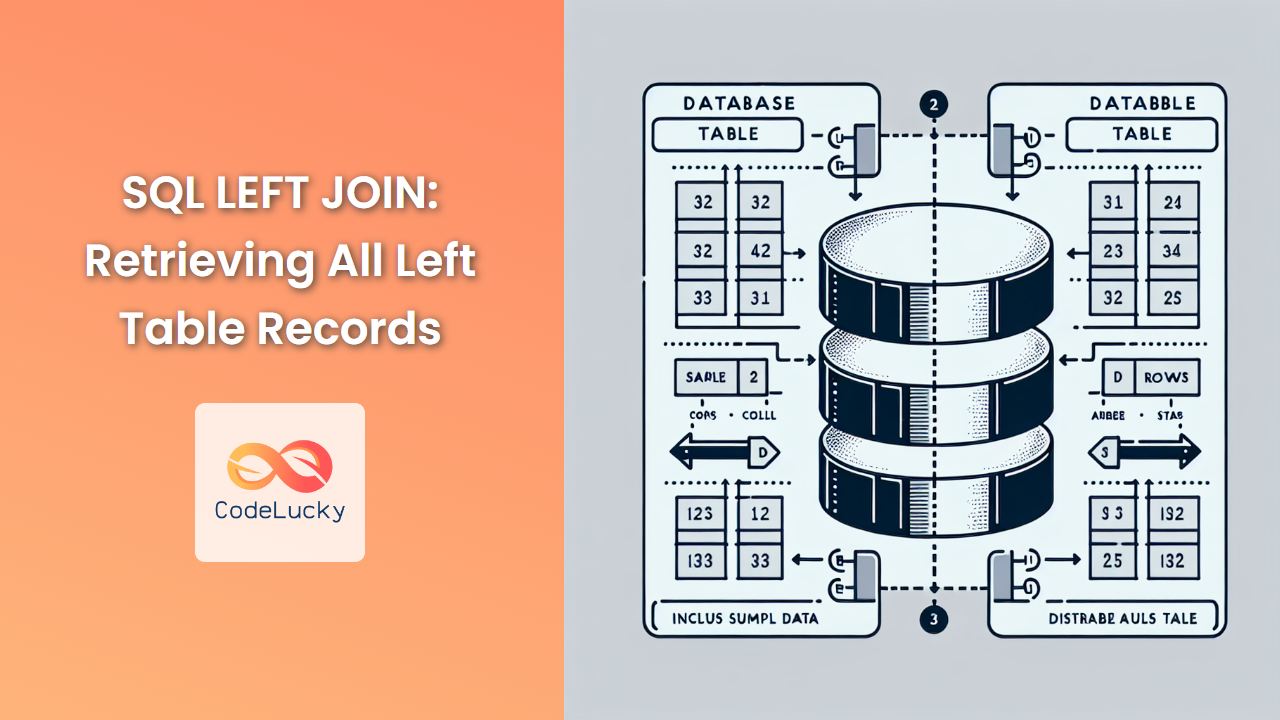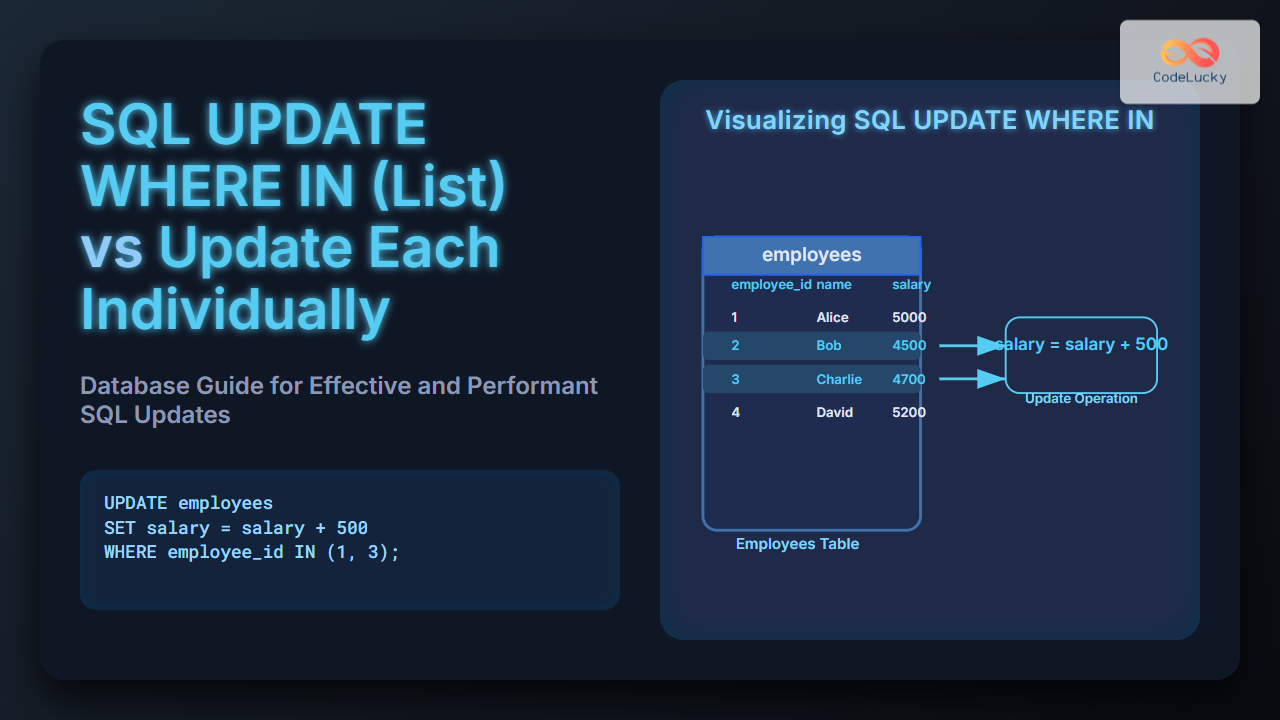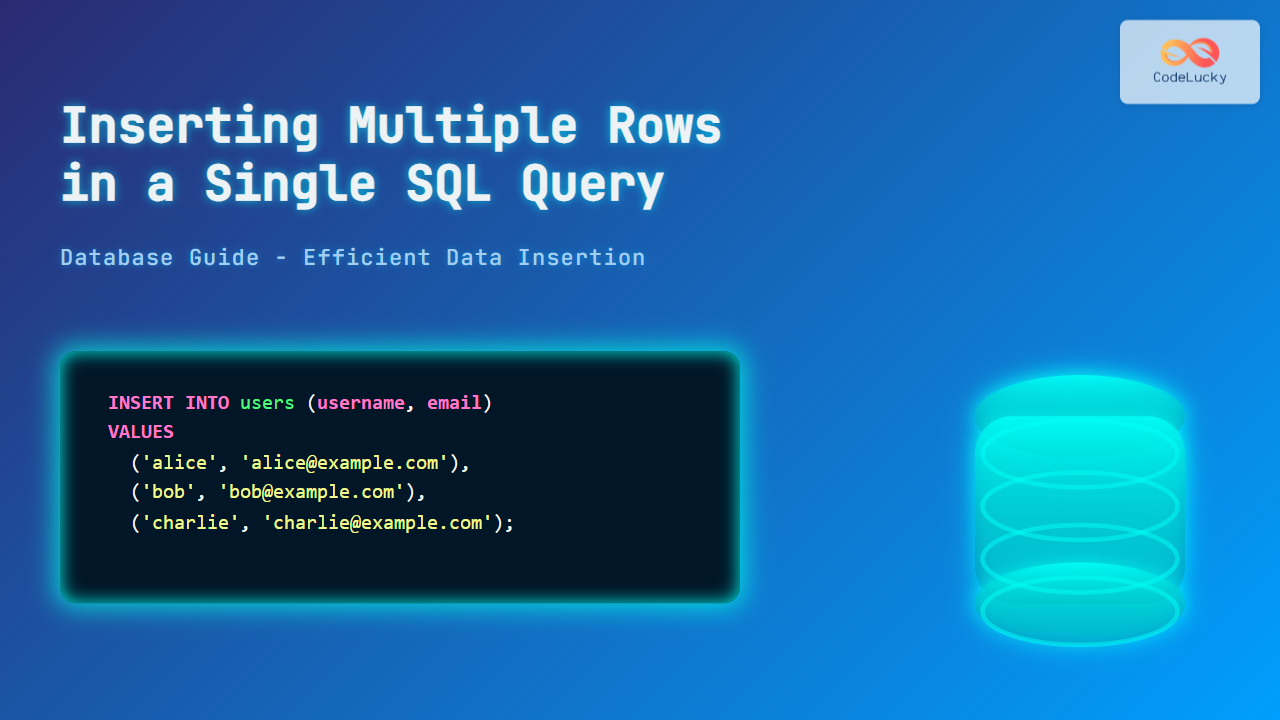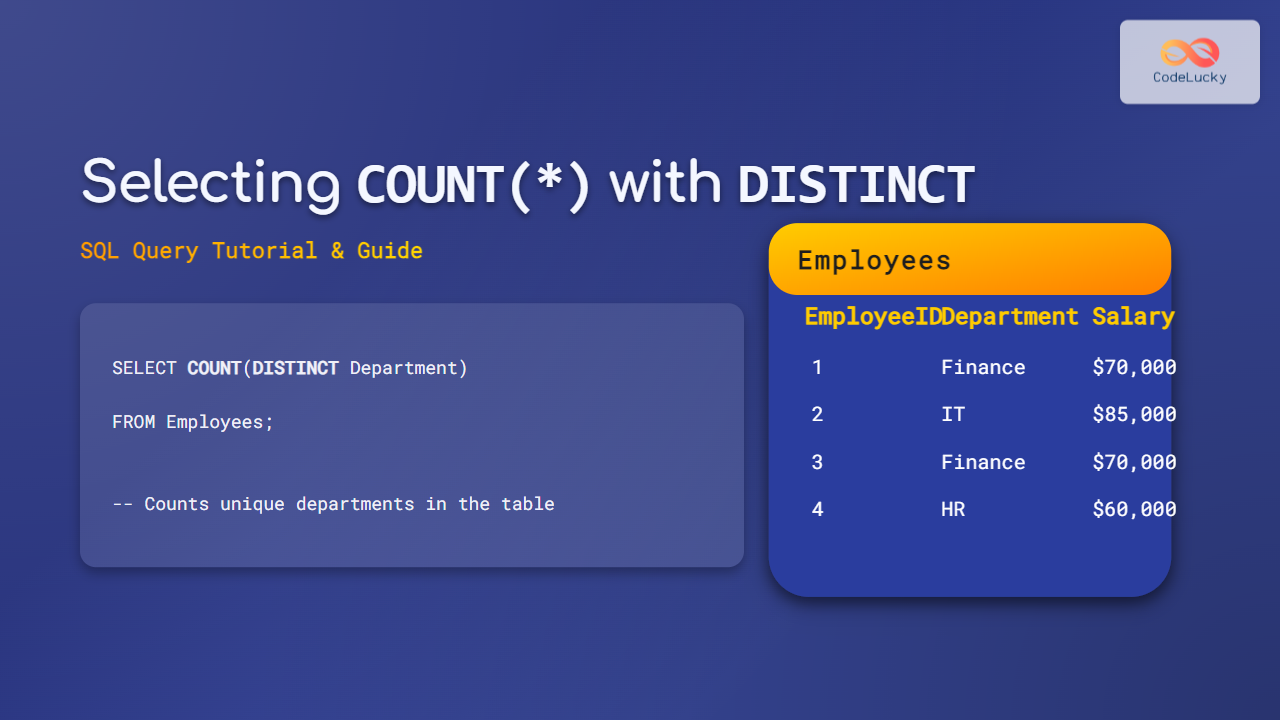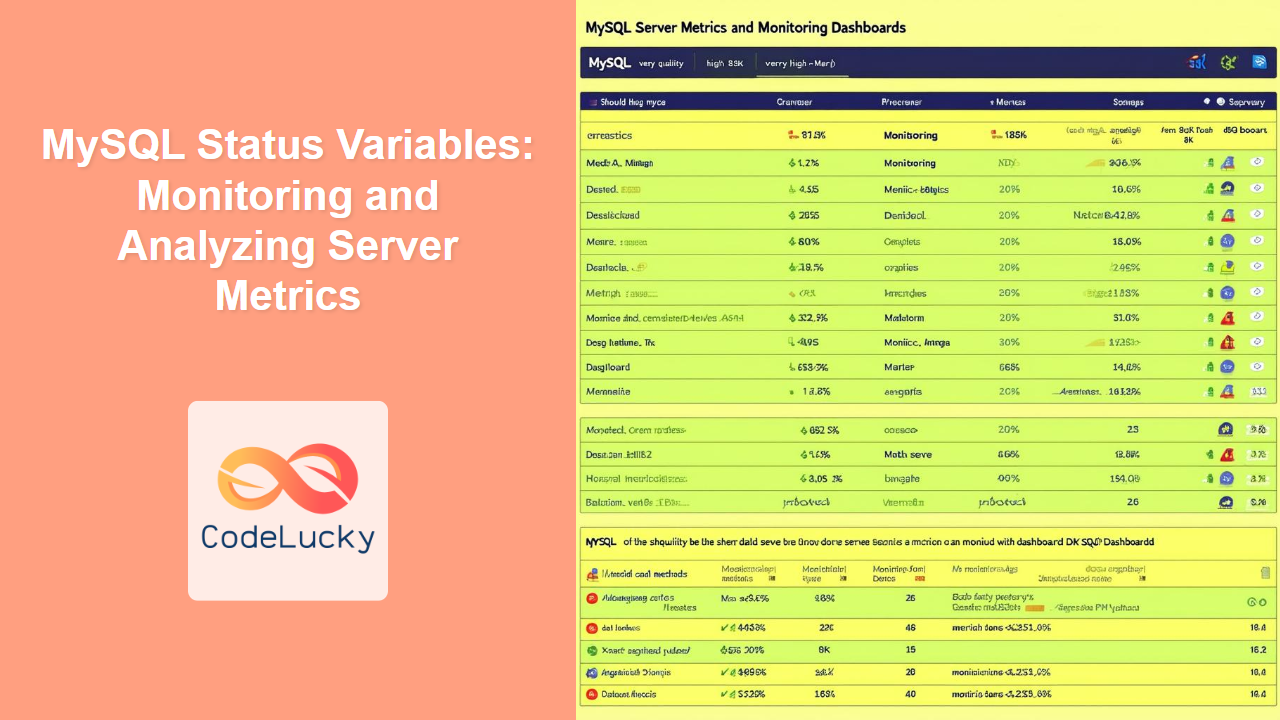SQL joins are powerful tools for combining data from multiple tables, and the LEFT JOIN is particularly useful when you want to retrieve all records from one table, even if they don't have corresponding matches in another table. In this comprehensive guide, we'll dive deep into the LEFT JOIN, exploring its syntax, use cases, and providing numerous practical examples to solidify your understanding.
Understanding LEFT JOIN
A LEFT JOIN returns all records from the left table (the first table mentioned in the query) and the matched records from the right table. If there's no match, the result is NULL on the right side.
The basic syntax of a LEFT JOIN is:
SELECT columns
FROM table1
LEFT JOIN table2
ON table1.column = table2.column;
🔑 Key Point: The LEFT JOIN is also known as LEFT OUTER JOIN in some database systems.
Why Use LEFT JOIN?
LEFT JOIN is incredibly useful in various scenarios:
- 📊 Retrieving all records from a main table, even if related data is missing
- 🔍 Identifying missing relationships between tables
- 📈 Generating reports that include all primary records, regardless of associated data
- 🧩 Combining data from multiple tables with different granularities
Let's explore these use cases with practical examples.
Example 1: Retrieving All Customers and Their Orders
Imagine we have two tables: Customers and Orders. We want to list all customers, including those who haven't placed any orders.
CREATE TABLE Customers (
CustomerID INT PRIMARY KEY,
CustomerName VARCHAR(100),
City VARCHAR(100)
);
CREATE TABLE Orders (
OrderID INT PRIMARY KEY,
CustomerID INT,
OrderDate DATE,
TotalAmount DECIMAL(10, 2)
);
INSERT INTO Customers (CustomerID, CustomerName, City) VALUES
(1, 'Alice Johnson', 'New York'),
(2, 'Bob Smith', 'Los Angeles'),
(3, 'Charlie Brown', 'Chicago'),
(4, 'Diana Ross', 'Miami');
INSERT INTO Orders (OrderID, CustomerID, OrderDate, TotalAmount) VALUES
(101, 1, '2023-01-15', 150.00),
(102, 2, '2023-02-20', 200.50),
(103, 1, '2023-03-10', 75.25);
Now, let's use a LEFT JOIN to retrieve all customers and their orders:
SELECT c.CustomerID, c.CustomerName, c.City, o.OrderID, o.OrderDate, o.TotalAmount
FROM Customers c
LEFT JOIN Orders o ON c.CustomerID = o.CustomerID;
Result:
| CustomerID | CustomerName | City | OrderID | OrderDate | TotalAmount |
|---|---|---|---|---|---|
| 1 | Alice Johnson | New York | 101 | 2023-01-15 | 150.00 |
| 1 | Alice Johnson | New York | 103 | 2023-03-10 | 75.25 |
| 2 | Bob Smith | Los Angeles | 102 | 2023-02-20 | 200.50 |
| 3 | Charlie Brown | Chicago | NULL | NULL | NULL |
| 4 | Diana Ross | Miami | NULL | NULL | NULL |
🔍 Observation: Charlie Brown and Diana Ross appear in the result with NULL values for order details, indicating they haven't placed any orders yet.
Example 2: Finding Customers Without Orders
Building on the previous example, we can use LEFT JOIN to identify customers who haven't placed any orders:
SELECT c.CustomerID, c.CustomerName, c.City
FROM Customers c
LEFT JOIN Orders o ON c.CustomerID = o.CustomerID
WHERE o.OrderID IS NULL;
Result:
| CustomerID | CustomerName | City |
|---|---|---|
| 3 | Charlie Brown | Chicago |
| 4 | Diana Ross | Miami |
💡 Tip: This query is particularly useful for identifying inactive customers or potential leads who haven't converted yet.
Example 3: Combining Employee and Department Data
Let's introduce a more complex scenario with employees and departments:
CREATE TABLE Departments (
DepartmentID INT PRIMARY KEY,
DepartmentName VARCHAR(50)
);
CREATE TABLE Employees (
EmployeeID INT PRIMARY KEY,
FirstName VARCHAR(50),
LastName VARCHAR(50),
DepartmentID INT,
Salary DECIMAL(10, 2)
);
INSERT INTO Departments (DepartmentID, DepartmentName) VALUES
(1, 'HR'),
(2, 'IT'),
(3, 'Finance'),
(4, 'Marketing');
INSERT INTO Employees (EmployeeID, FirstName, LastName, DepartmentID, Salary) VALUES
(101, 'John', 'Doe', 1, 50000),
(102, 'Jane', 'Smith', 2, 60000),
(103, 'Mike', 'Johnson', 2, 55000),
(104, 'Emily', 'Brown', 3, 65000),
(105, 'David', 'Wilson', NULL, 45000);
Now, let's use LEFT JOIN to list all employees with their department information:
SELECT e.EmployeeID, e.FirstName, e.LastName, e.Salary, d.DepartmentName
FROM Employees e
LEFT JOIN Departments d ON e.DepartmentID = d.DepartmentID;
Result:
| EmployeeID | FirstName | LastName | Salary | DepartmentName |
|---|---|---|---|---|
| 101 | John | Doe | 50000 | HR |
| 102 | Jane | Smith | 60000 | IT |
| 103 | Mike | Johnson | 55000 | IT |
| 104 | Emily | Brown | 65000 | Finance |
| 105 | David | Wilson | 45000 | NULL |
🔍 Observation: David Wilson appears in the result with a NULL department, indicating he's not assigned to any department.
Example 4: Calculating Department Statistics
We can use LEFT JOIN to calculate department statistics, including departments with no employees:
SELECT
d.DepartmentID,
d.DepartmentName,
COUNT(e.EmployeeID) AS EmployeeCount,
AVG(e.Salary) AS AverageSalary
FROM Departments d
LEFT JOIN Employees e ON d.DepartmentID = e.DepartmentID
GROUP BY d.DepartmentID, d.DepartmentName;
Result:
| DepartmentID | DepartmentName | EmployeeCount | AverageSalary |
|---|---|---|---|
| 1 | HR | 1 | 50000.00 |
| 2 | IT | 2 | 57500.00 |
| 3 | Finance | 1 | 65000.00 |
| 4 | Marketing | 0 | NULL |
💡 Tip: This query helps identify departments that may be understaffed or overstaffed, and provides insights into salary distributions across departments.
Example 5: Combining Multiple LEFT JOINs
Let's add a Projects table and demonstrate how to use multiple LEFT JOINs:
CREATE TABLE Projects (
ProjectID INT PRIMARY KEY,
ProjectName VARCHAR(100),
StartDate DATE,
EmployeeID INT
);
INSERT INTO Projects (ProjectID, ProjectName, StartDate, EmployeeID) VALUES
(1, 'Website Redesign', '2023-01-01', 102),
(2, 'Database Upgrade', '2023-02-15', 103),
(3, 'Annual Report', '2023-03-01', 104);
Now, let's combine all three tables using LEFT JOINs:
SELECT
e.EmployeeID,
e.FirstName,
e.LastName,
d.DepartmentName,
p.ProjectName,
p.StartDate
FROM Employees e
LEFT JOIN Departments d ON e.DepartmentID = d.DepartmentID
LEFT JOIN Projects p ON e.EmployeeID = p.EmployeeID;
Result:
| EmployeeID | FirstName | LastName | DepartmentName | ProjectName | StartDate |
|---|---|---|---|---|---|
| 101 | John | Doe | HR | NULL | NULL |
| 102 | Jane | Smith | IT | Website Redesign | 2023-01-01 |
| 103 | Mike | Johnson | IT | Database Upgrade | 2023-02-15 |
| 104 | Emily | Brown | Finance | Annual Report | 2023-03-01 |
| 105 | David | Wilson | NULL | NULL | NULL |
🔍 Observation: This query provides a comprehensive view of employees, their departments, and assigned projects. Employees without projects or departments are still included in the results.
Best Practices and Tips for Using LEFT JOIN
- 🎯 Always specify the join condition in the ON clause to avoid unintended cross joins.
- 📊 Use table aliases to improve query readability, especially in complex joins.
- 🧠 Consider the order of tables in LEFT JOINs, as it affects which table's records are all included.
- 🚀 Use appropriate indexes on join columns to improve query performance.
- 🧪 Test your queries with edge cases, such as NULL values or missing records, to ensure they behave as expected.
Common Pitfalls to Avoid
- ❌ Forgetting that LEFT JOIN includes all records from the left table, which may lead to unexpected results in aggregations.
- ⚠️ Misusing WHERE clauses with LEFT JOINs, which can turn them into INNER JOINs if not careful.
- 🔄 Overusing LEFT JOINs when INNER JOINs would be more appropriate for the task at hand.
Conclusion
LEFT JOIN is a powerful SQL feature that allows you to retrieve all records from one table while including matching data from another table. It's particularly useful for identifying missing relationships, generating comprehensive reports, and combining data from multiple sources.
By mastering LEFT JOIN, you'll be able to write more flexible and informative queries, gaining deeper insights into your data. Remember to consider the structure of your data and the specific requirements of your analysis when deciding whether to use LEFT JOIN or other types of joins.
As you continue to work with SQL, experiment with different join types and combinations to fully leverage the power of relational databases. Happy querying! 🚀💾
- Understanding LEFT JOIN
- Why Use LEFT JOIN?
- Example 1: Retrieving All Customers and Their Orders
- Example 2: Finding Customers Without Orders
- Example 3: Combining Employee and Department Data
- Example 4: Calculating Department Statistics
- Example 5: Combining Multiple LEFT JOINs
- Best Practices and Tips for Using LEFT JOIN
- Common Pitfalls to Avoid
- Conclusion

